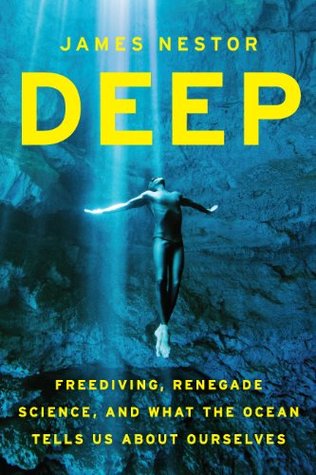More on this book
Community
Kindle Notes & Highlights
by
James Nestor
Read between
February 6 - February 13, 2023
By listening to these subtle shifts in click patterns, and the volume and clarity of the clicks, he has taught himself to predict the location and moment that the whales will surface, with startling accuracy. I ask him: How accurate? Then he demonstrates. “They are two kilometers that way,” he says, pointing west. “They are coming up. They will be here in two minutes.” We sit, staring westward. “Thirty seconds . . .” he says. “They are moving to the east, and . . . right . . .” Exactly on cue, a pod of five whales surfaces about fifteen hundred feet from our boat,
Schnöller believes that, when the whales echolocate our bodies, they perceive that we have hair, big lungs, a large brain—a combination of characteristics they don’t see in the ocean. Perhaps they recognize that we’re fellow mammals, that we have the potential for intelligence. If this theory is correct, then sperm whales are smarter than us in one crucial way: they see the similarities between our two species more readily than we do.
Lander research is a relatively new science and only a half a dozen researchers do this kind of work in the hadal zone.
What they discovered instead was a congregation of giant amoebas the size of a large man’s fists rooted in the seafloor, each covered in a coat of frilly appendages that resembled the ruffles of a 1970s-era tuxedo shirt. These creatures, called xenophyophores, were more than four inches wide, and yet each was a single cell.
The R/V Falkor’s mission, according to Wendy Schmidt, Eric’s wife and Schmidt Ocean Institute’s cofounder, is “to communicate about the science of the oceans to people so that they can care about it.”
The Falkor’s board selects about a half-dozen teams each year to conduct oceanographic studies on the ship. Those lucky enough to win research time get a state-of-the-art vessel with twenty crew members at their disposal for up to forty days at a time—at zero cost.
The grainy black-and-white photographs revealed not only the presence of active hydrothermal vents but crabs, mussels, and lobsters. There was life down there, tons of it, flourishing around a column of seawater hot enough to melt lead (750 degrees).
Fabrice Schnöller launched a new company called Click Research (www.click-research.net), which provides citizen-scientists affordable gear to do DIY oceanic research.


